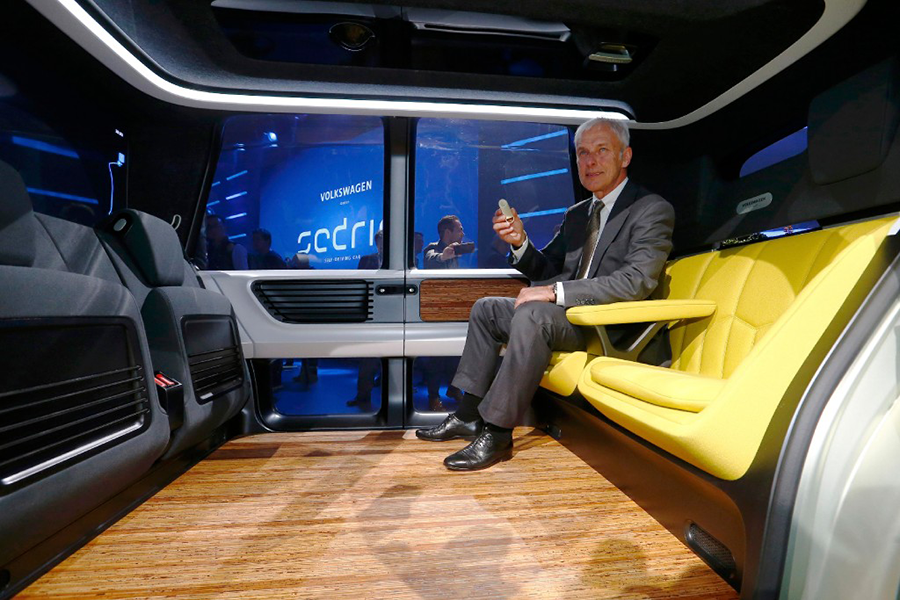Is VW's new Sedric a driverless car – or a lounge on wheels?
Loading...
Hold on to your steering wheel before it’s gone: Volkswagen on Monday unveiled a new design of driverless cars that it said “redefines individual mobility.”
Sedric, the Germany automaker’s first concept car, is “driven” by a voice assistant and is equipped with a windscreen that serves as a massive television. Debuted at the Geneva International Motor Show on Monday, the concept driverless car, with its two-part doors and an interior that has “the welcome home feeling,” is a “comfortable lounge on wheels,” VW said.
Though still just a concept created by VW’s engineers and designers, Sedric has much potential to see its components realized in the near future, said Matthias Müller, chief executive officer of the Volkswagen Group.
“The future of mobility is vibrant, colorful and fascinating,” he said in a statement. “With Sedric we are looking far ahead: the study demonstrates how a new, integrated mobility system of the future could function."
The appearance of Sedric – which The Verge has compared to “a toaster” – challenges the traditional design of cars, including that of some driverless cars. But VW’s idea to build an autonomous car that has a “robust character” that is friendly and empathetic, and generates spontaneous trust immediately with its users, is not too different from the visions of its competitors.
With everything controlled by a voice assistant similar to Apple’s Siri, Sedric hopes to be more than just a vehicle, but rather “a helper” in its passengers’ day-to-day lives, a resource that could be hailed from a smartphone app or be owned by individuals, the company said.
"Sedric will drive the children to school and then take their parents to the office, look independently for a parking space, collects shopping that has been ordered, picks up a visitor from the station and a son from sports training – all at the touch of a button, with voice control or with a smartphone app – fully automatically, reliably and safely," according to the company’s statement.
Such a design, with emphasis on sustainability and safe mobility, may or may not put VW ahead in the autonomous car race. But it does clearly elevate the conversation surrounding autonomous cars, making their future a question of comfort and convenience, in addition to safety. As The Christian Science Monitor previously noted, the current discussion up until now had largely focused on the question of whether or not a human driver is needed in the vehicle.
Sedric is also the latest sign of progress for the troubled German automaker as it emerges from its emissions cheating scandal, which had cost VW billions of dollars in penalties.
But even as Mr. Müller described a company struggling to find its way in an interview with CNBC on Monday, VW appears to be looking to Sedric, a platform of cross-brand ideas, as its future.
"We are convinced that fully-automated vehicles will make life in our cities better, more eco-friendly and above all safer,” he said in a statement. “Sedric gives the first concrete foretaste of that today. Sedric is a trailblazer and idea platform for autonomous driving.”








